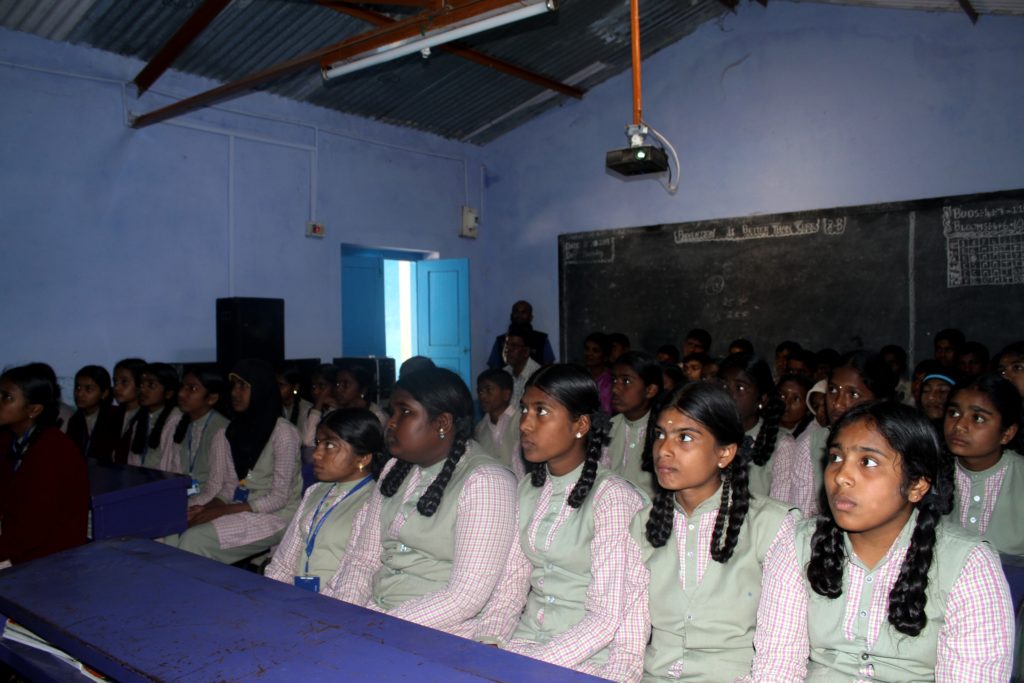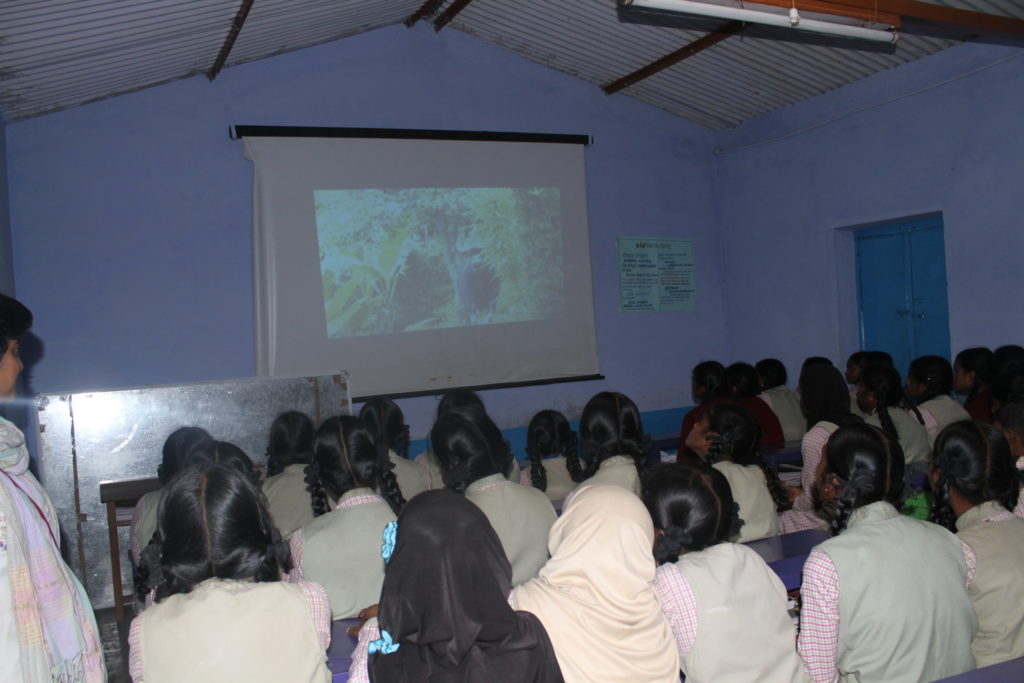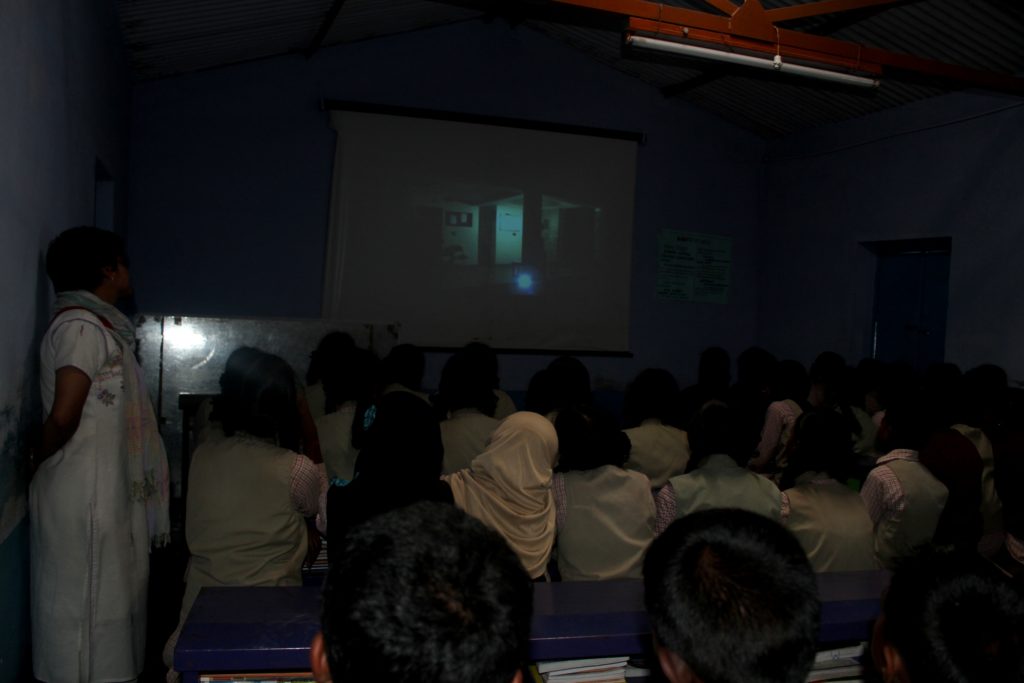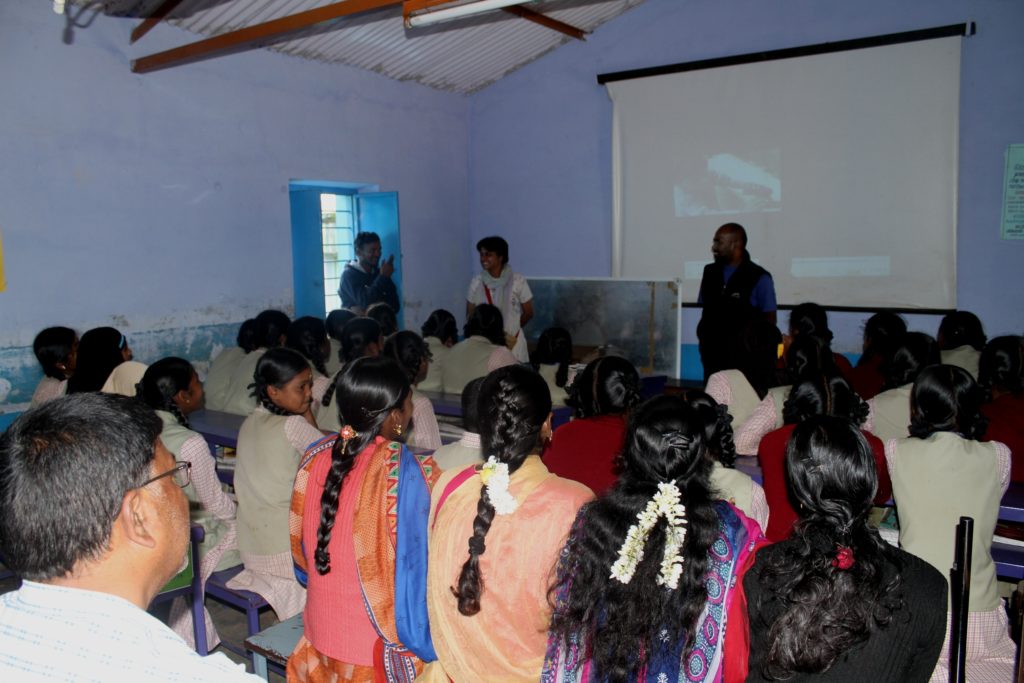A unique program is underway at the Kookalthorai Govt School, near Kotagiri, in the Nilgiris. Located in an agricultural hotbed of the region, the school attracts many students from families involved in intensive agriculture in the landscape. The school, along with Keystone Foundation has embarked on a program that can well serve as a role model for many others in the district. A model plot to be developed, within the school premises, on the principles of organic farming was envisaged as a way to involve the students in understanding their land while also improving the nutritional quality of their mid-day meal. The landscape also has many visitors by way of wildlife, at different times that come in search of food, water and so frequent interactions with humans animals is not unheard of.
10th October, 2019
It was in this context that NNHS jointly with Keystone sought to initiate an engagement program with the school to get the students to think about the landscape, the livelihoods, its challenges and measures for coexistence. The first event was held on October 10th at the school when the students of grades 8 and 9 (numbering to about 60) gathered to watch the movie titled, ‘Living with Gaur’, which took them through their own experiences of coming close to the Gaur around their villages – be it their homes or farms. The students enjoyed watching the film which was followed by a short interaction session which sought out their perspectives or thoughts on Gaur in their backyards. Some students expressed a passive acceptance approach, whilst some others felt it was necessary to drive them away. Some adults expressed concern about damage to crops and human safety.
9th December, 2019
The engagement was followed up with another one in conjunction with Keystone Foundation. This time around, the students (30 from grade 9) were taken to the model plot, where Thanvish explained the soil characteristic of the region and the possible impacts of chemical based farming practices. This was followed by a short discussion with the students to understand what animals they saw, which ones visited their farms, at what times of the year for what purpose and what measures they took to protect their crops or prevent the animals from coming in.
Many cited electric fencing as the preferred option while the all spoke about sighting elephant, bear, gaur, barking deer, sambar, wild boar, hare and monkey in and around their village. Many were able to make the connection between the crop(s) grown and the preference of animals towards that crop. Some felt that animals came into their landscapes when water got scarce in the forests while yet others felt the forests had diminished leading to animals coming into their lands.
This is only but the start of a long engagement during which we hope the students can dig deeper – into the past, into their traditional knowledge as they look forward into their futures in the landscape. The objective of these engagements is to have the students thinking about the multiple facets of livelihoods and wildlife in their areas so that they may be able to grasp the nuances of how mitigation that takes into account the welfare of both man and animal is possible. We will keep adding new chapters to this story as the new year unfolds.









